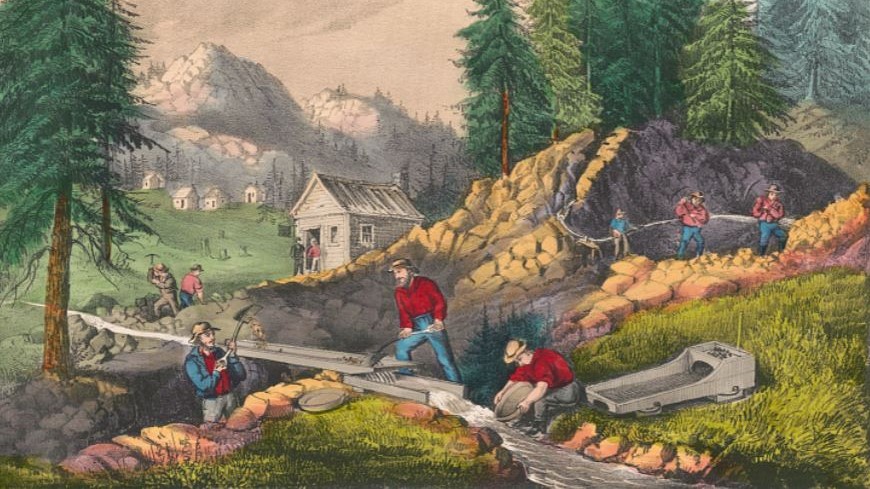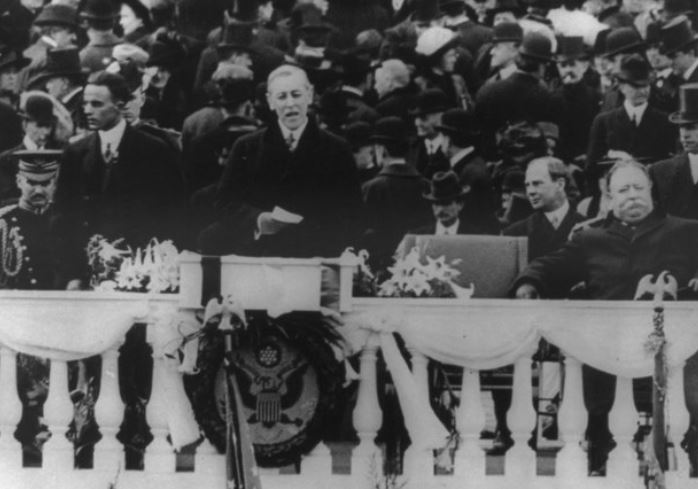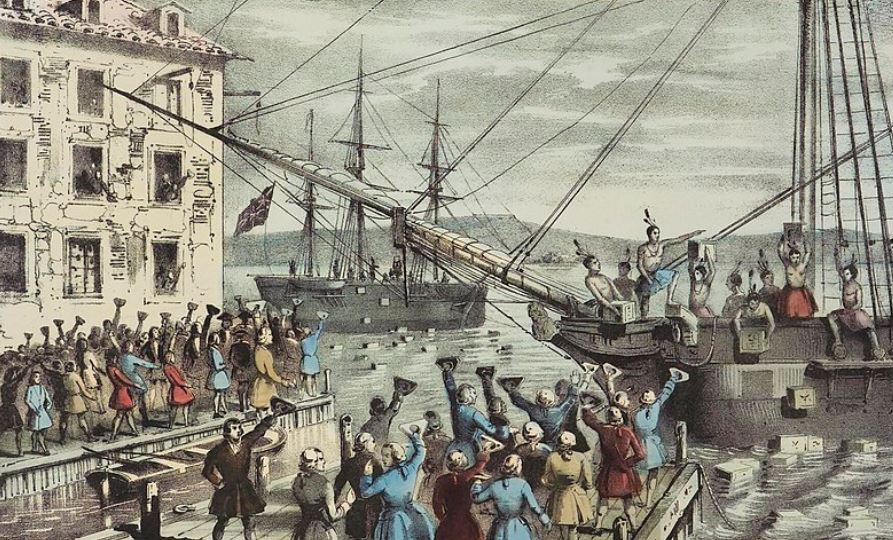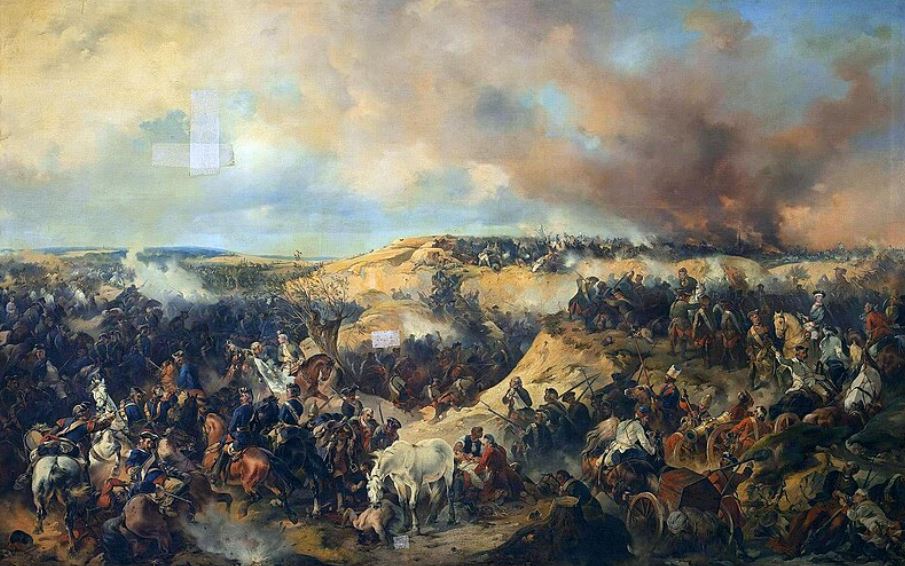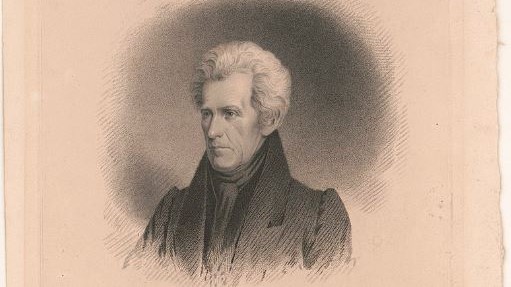The California Gold Rush, spanning from 1848 to 1855, stands as a monumental chapter in American history.
It lured hundreds of thousands to the West with the promise of wealth and new beginnings.
Common perception often paints the gold miners as the primary beneficiaries of this era, striking it rich in the hills of California.
However, the reality of who truly benefitted is more nuanced. This article aims to delve into the diverse array of individuals and groups who reaped the rewards of the Gold Rush, highlighting the complexities beyond the surface allure of gold.
- 1. The California Gold Rush Miners
- 2. The Merchants and Entrepreneurs during the California Gold Rush Miners
- 3. The Service Providers during the California Gold Rush Miners
- 4. The Californian Land Owners and Speculators
- 5. The Negative Impact Upon The Native Americans and Immigrants
- 6. Final Thoughts of the California Gold Rush
- Further Reading
1. The California Gold Rush Miners

The allure of gold drew a diverse group of individuals to California, all hopeful for quick riches. These miners were known as “Forty-Niners,”.
They endured harsh living conditions, working in rudimentary camps with minimal shelter. The work itself was perilous, with frequent accidents and health hazards from long hours of manual labor.
Only a few miners did manage to strike it rich. They were the exception rather than the rule.
The average miner’s earnings were modest at best. For instance, it’s estimated that only a small percentage of miners made significant profits. Many barely covered their costs.
According to historical records, only about 5% of miners made a significant profit.
The rest were often left in debt or with minimal gains. They had invested their savings and time into a dream that largely remained unfulfilled.
Despite the glamorized tales, the majority of miners faced the harsh reality of grueling work and uncertain rewards. The dreams of prosperity often evaporated in the relentless pursuit of elusive gold.
2. The Merchants and Entrepreneurs during the California Gold Rush Miners
In stark contrast to the struggling miners, merchants and entrepreneurs thrived during the California Gold Rush.
They recognized the burgeoning demand for goods and services as droves of people flocked to California.
Merchants provided essential items such as food, clothing, and mining equipment, often at inflated prices due to high demand.
Entrepreneurs seized the opportunity to establish businesses that catered to the needs of the growing population. These ventures ranged from general stores to specialized services, and many saw exponential profits.
Figures like Levi Strauss, who supplied durable clothing to miners, and Samuel Brannan, who became California’s first millionaire by capitalizing on the demand for mining supplies, exemplify this success.
Levi Strauss & Co. arrived in San Francisco during the gold rush, selling dry goods. Seeing miners wearing out flimsy trousers quickly, Levi Strauss capitalized on the need for durability. He started supplying sturdier pants made from canvas. He later switched to denim. In 1873, they partnered with a tailor to patent riveted pockets, a key innovation that strengthened the pants.
These “copper riveted overalls” became a huge hit, known for their toughness and practicality. By catering to the miners’ needs, Levi Strauss & Co. laid the foundation for the denim empire it is today.
Samuel Brannan had a knack for opportunity. Though he owned the first newspaper in San Francisco, it wasn’t the news that made him rich. He owned the only store between San Francisco and the gold fields. He bought up all the mining supplies he could find. With a shrewd showmanship, he ran through the streets shouting about the gold.
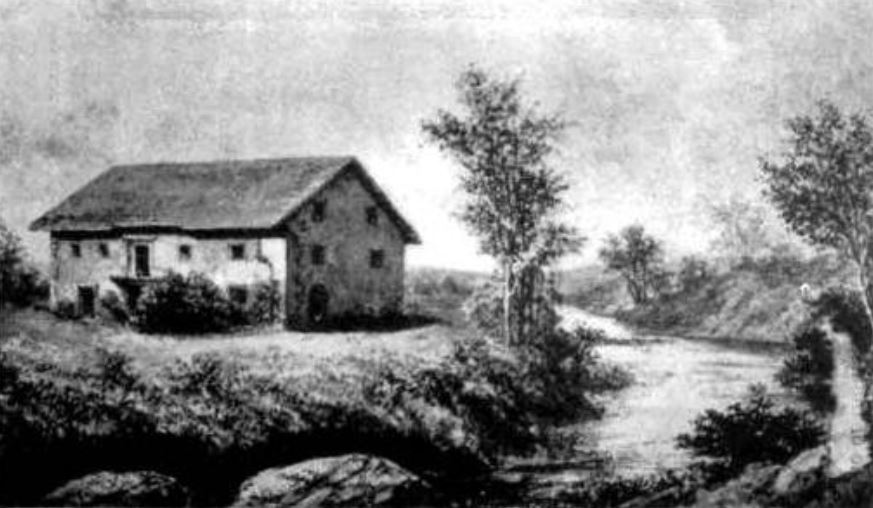
He inflated the price of pans dramatically, making a staggering profit in just weeks. This was just the beginning. His store boomed from the constant flow of miners needing supplies, and he invested his earnings in real estate, becoming California’s first millionaire.
By supplying the necessities and luxuries that miners craved, merchants and entrepreneurs secured their wealth. They benefitted significantly from the economic boom, often making more stable and substantial profits than the miners themselves.
3. The Service Providers during the California Gold Rush Miners
The influx of miners and other fortune-seekers created a booming market for various services.
Service providers, including bankers, saloon owners, and entertainers, also found lucrative opportunities during the California Gold Rush.
Bankers facilitated financial transactions and offered secure storage for gold. They would charge high fees for their services.
Saloon owners and entertainers capitalized on the miners’ desire for relaxation and leisure.
Saloons became social hubs where miners spent their earnings on drinks, gambling, and entertainment.
Notable figures in this sector amassed significant fortunes by catering to these needs. For instance, entertainers and performers who traveled to California found eager audiences willing to pay for a respite from their arduous routines.
These service providers tapped into the disposable income of miners and other residents, creating thriving businesses that significantly contributed to their financial success. Their profits often rivaled or exceeded those of the merchants, reflecting the diverse avenues of wealth generated during the Gold Rush.
4. The Californian Land Owners and Speculators
The Gold Rush also triggered a real estate boom. Land values skyrocketing due to the sudden influx of settlers.
Landowners and speculators quickly recognized the potential for profit in selling or leasing land to the new arrivals. Urban areas, in particular, saw dramatic increases in property prices.
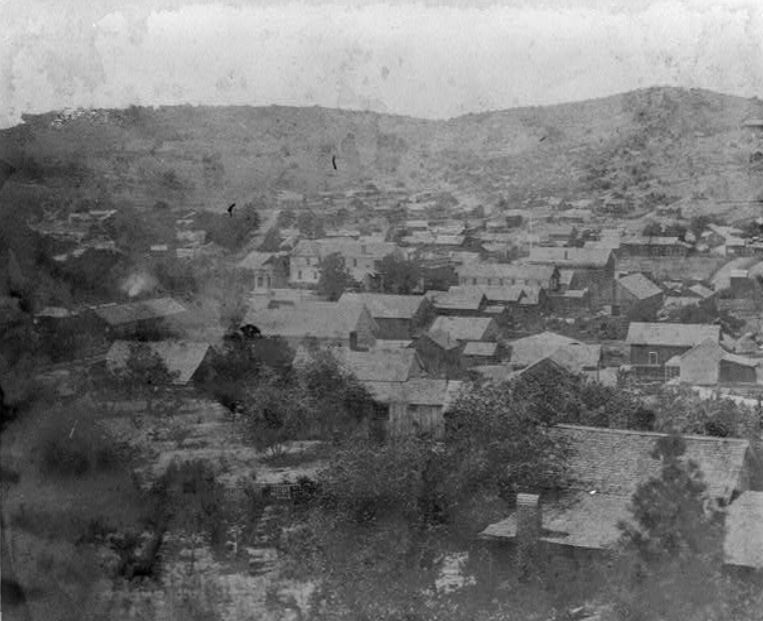
Speculators like John Sutter, initially a landholder in the Sacramento Valley, saw mixed fortunes. While Sutter’s land became the epicenter of the Gold Rush, he ultimately lost control over his properties due to legal disputes and the overwhelming influx of squatters.
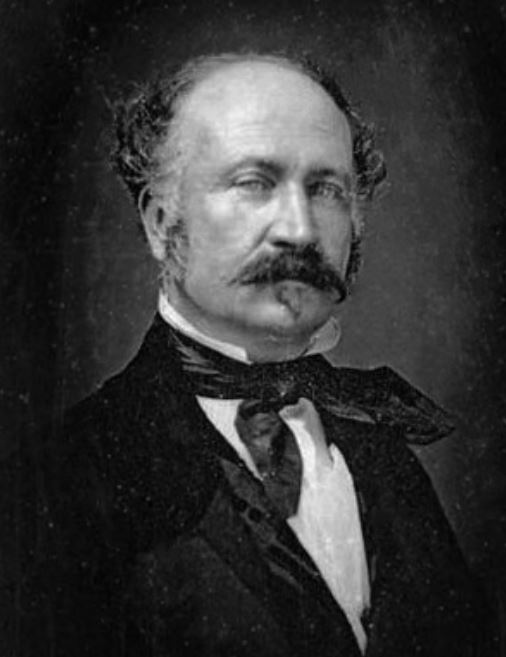
Conversely, many other landowners and speculators benefitted immensely, leveraging their holdings to extract high prices from desperate miners and entrepreneurs looking to establish businesses.
San Francisco, for example, transformed from a small settlement to a bustling city almost overnight, driven by real estate transactions. The rapid urbanization led to significant profits for those who had invested in land early.
Landowners and speculators thus reaped substantial rewards, driven by the dramatic increase in land demand and prices. Their strategic acquisitions and sales played a pivotal role in shaping the urban landscape of California during and after the Gold Rush.
5. The Negative Impact Upon The Native Americans and Immigrants
The impact of the Gold Rush on Native Americans and immigrants was profound and often detrimental.
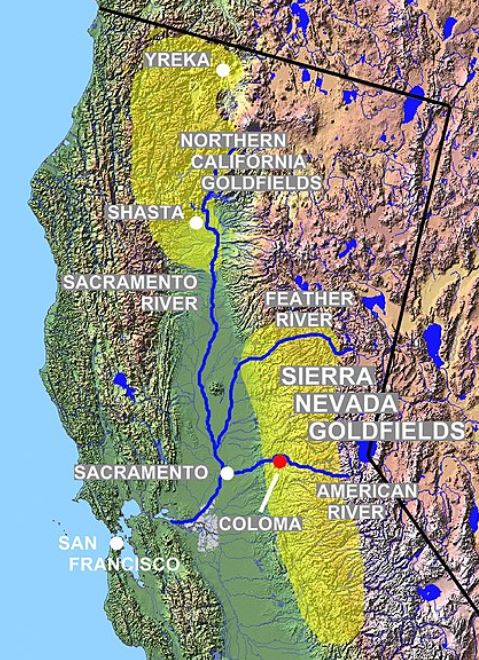
Native American tribes experienced significant disruption as settlers encroached on their lands. This led to displacement, conflict, and a drastic decline in their population due to disease and violence.
However, some tribes engaged in trade with the newcomers, providing food and supplies. Albeit this benefit was marginal compared to the losses they endured.
Immigrants from around the world, particularly from China, Latin America, and Europe, also flocked to California.
They faced a mixed reality of opportunity and prejudice.
While some immigrants found success by establishing businesses or working as laborers, many encountered severe discrimination and legal barriers. Despite these challenges, the diverse influx of immigrants contributed to the multicultural fabric of California, laying foundations for future economic and social developments.
6. Final Thoughts of the California Gold Rush
While miners were the face of the California Gold Rush, the true beneficiaries were often those who catered to their needs.
Merchants, entrepreneurs, service providers, and landowners capitalized on the booming economy, securing substantial wealth.
The Gold Rush significantly impacted California, accelerating its development and reshaping its society and economy.
Further Reading
I hope you have found this blog post about Who benefited the most from the California Gold Rush? interesting. To find out more about other expansions of the United States, read here:
- How Many People Died in the California Gold Rush?
- When Did Spain Lose California?
- Why Didn’t the United States Take All of Mexico?
- What US States Used to be Mexico?
- Why did Britain want Texas Independent?
- Who Owned Alaska Before Russia?
You may also enjoy these articles exploring American history:

